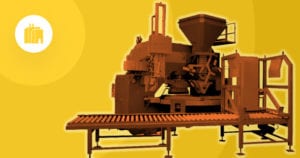
Pharma is big business, but what it’s not generally recognized is, in large part, a manufacturing business with complex supply chains, finicky chemical processes and products that have to meet stringent quality controls. Few of those outside the industry think about how drugs are made safely, efficiently and at scale with reliable quality and in precisely measured doses.
Even more interesting is the simple fact that pharma often produces sophisticated drugs using manufacturing processes that are decades out of date, and which are being phased out in comparable industries, such as chemical manufacturing.
Batch Processes and the Difficulties of Transition
Drugs are typically produced with a batch process, with involves mixing compounds in large vats, followed by long delays to measure the quality of each intermediate product, and then moving to another step, sometimes in another facility. Machinery is not used continuously. Information about conditions, status, and quality is often distributed in a wide variety of separate systems. Some critical data is still gathered and stored in paper-based logs.
Manufacturing would be more efficient if it were continuous and used in everything from automobiles to the chemical industry, where compounds move through the plant without stopping, being tested and measured along the way—which plays to the strengths of IoT. Continuous manufacturing can also respond more flexibly to demand. If more is needed, you can just run the process for longer to incrementally increase product, while increasing amounts with batch require starting an entirely new batch, with all the delays and possibilities of oversupply that implies.
Unfortunately, the route to modernized manufacturing processes in pharma is not a straightforward one.
A Regulation-Driven Industry
Given the possible consequences of errors in drug manufacturing, pharmaceuticals are heavily regulated. These regulations have helped delayed manufacturing processes—and will now be driving change.
When the Food and Drug Administration (FDA) approves a drug, it’s not just the active compound that is part of the approval. The details of the manufacturing process itself–down to plant layout–are included. Any change in the process requires explicit regulatory approval with attendant paperwork. In other industries, continuous process improvements, with faster access to inventory here and a step eliminated there, are part of a company’s competitive advantage. Pharma manufacturing transformation requires significantly more planning.
The FDA has recognized the inherent regulatory difficulties and formed the Emerging Technology Team (ETT) with the goal of encouraging the adoption of new manufacturing methods, particularly continuous manufacturing. The intention is that they will meet with pharma companies early in development, before any regulatory submission. Any proposed manufacturing process will be extensively vetted prior to submission for approval.
While the FDA has a huge influence on global drug approvals, it’s far from the only such agency. There are more than 100 pharmaceutical regulatory authorities across the globe, each of which a global pharma manufacturer must take into account when planning a change in the manufacturing process.
Early Successes
The ETT has already proved its effectiveness. Vertex has been using continuous manufacturing for Orkambi, a cystic fibrosis drug since 2015. Janssen (now part of Johnson & Johnson) switched to continuous manufacturing for its HIV drug, Prezista, in 2016, after a long development period. Both interacted closely with the FDA to ensure approval of the manufacturing process before submitting the drugs for approval. J&J points particularly to combining formerly separate testing and sampling steps, enabled by IoT sensors, as a significant improvement.
Advantages of Compliance
The advantages of IoT for regulatory compliance can be a big part of its business case since IoT provides the ability to monitor and document all events, variations and concentration at every step of the manufacturing process. The collected data from IoT sensors enables plant operators to know what is going on during the entire process. This also provides sophisticated tracking for recalls if a specific run of a compound turns out to be associated with some problem.
IoT also allows for monitoring and documenting the activities of contract manufacturing organizations (CMOs), which carry out much of the actual manufacturing. Pharma supply chains are increasingly complex, with the manufacturing of the active pharmaceutical ingredient (API), overall formulation, and packaging taking place in different places, often by different contracted vendors.
Therefore, the demands of pharma regulators for monitoring, tracking, and reporting can drive IoT adoption as well as slow it down. Regulatory compliance is an often-underappreciated IoT driver.
IoT and the Road Ahead for Pharma Manufacturing
Pharma manufacturing equipment tends to be extremely expensive, as are the constituent ingredients, and the conditions under which they are manufactured have to be kept within extremely narrow tolerances. Continuous manufacturing will make the consequences of equipment failure anywhere along the line more serious. Batch processing can wait in one place or another for a bit, making it a somewhat more forgiving of single-point equipment failure. Real-time asset management using IoT sensor data and predictive maintenance will be essential.
In addition to the cost of a stopped line, there is the issue of maintaining quality, the most important consideration for the FDA. They always err on the side of caution, so any drug run with possible quality issues is guilty until proven innocent. So anticipating failures, replacement based on wear, and a minimal amount of unplanned downtime will make it easier to manage manufacturing quality, efficiency, and compliance while remaining flexible for changing market needs.





 Related Podcast Episode
Related Podcast Episode




 Related Applications
Related Applications



 Latest IoT News
Latest IoT News








